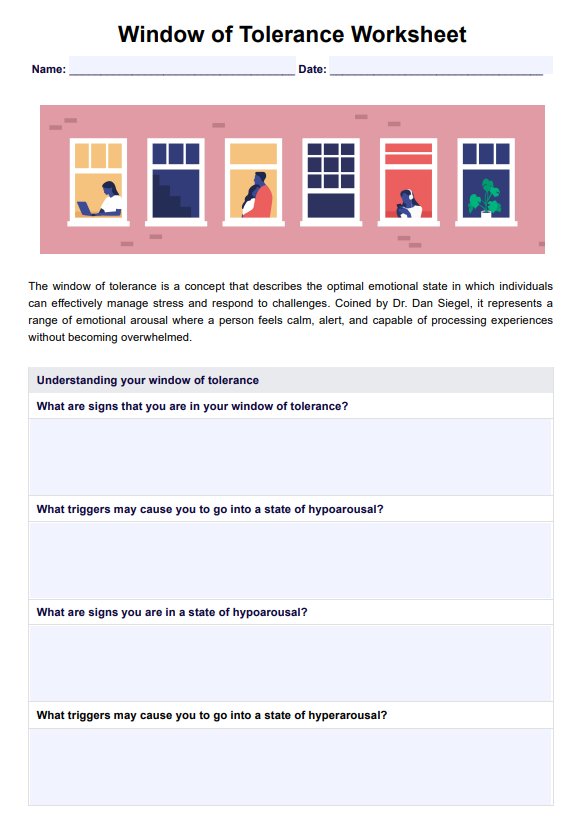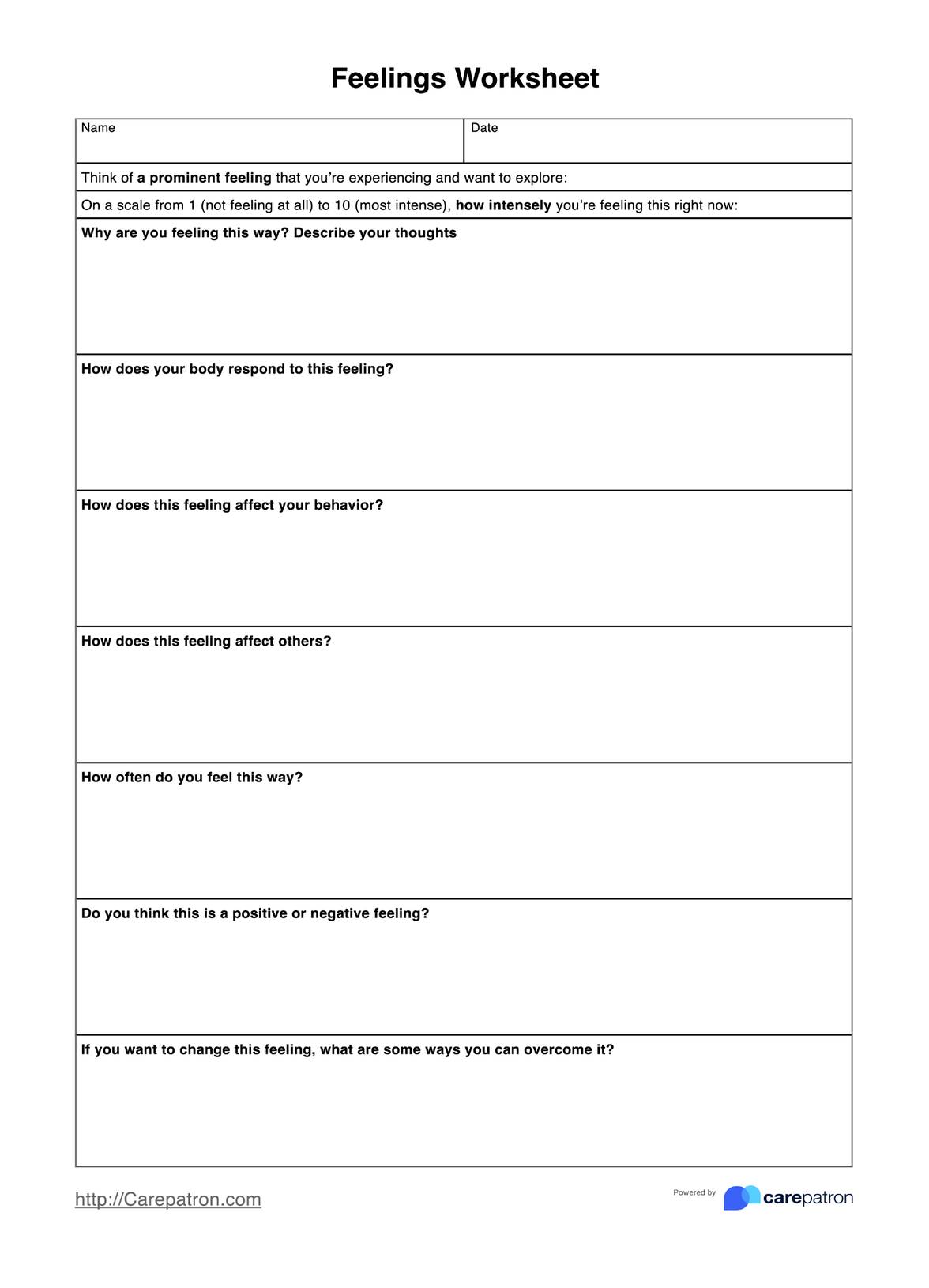Treatment Plan For Depression
Access our treatment plan for depression to alleviate patient depressive symptoms and work towards achieving greater psychological well-being. Increase daily functioning in patients, as well as healthy thoughts, feelings, and positive behaviors.


What Is A Treatment Plan For Depression?
Treatment plan templates are widely used in healthcare to ensure health professionals are accountable for their expertise, support, and advice. In which case, depression treatment plans are used to alleviate many of the symptoms that accompany major depressive disorder, as well as other forms of depression. Psychologists, therapists, and psychiatrists can use depression to give structure to appointments and address direct patient concerns. Depression treatment plans can look different depending on the mental health practitioner and their background, however, we have created a general depression treatment plan template for you to accommodate within your practice. They are designed to be adapted to meet the needs of both you and your patient and are created to improve patient mental well-being as well as facilitate higher clinical outcomes. Treatment plans are absolutely essential to ensure that the patient is proactive, sustains control over their mental health journey, and is continually making progress toward overarching goals.
Treatment Plan For Depression Template
Treatment Plan For Depression Example
How To Use This Treatment Plan Template For Depression
Although it may seem simple, we've created three essential steps for you to follow to ensure that you are incorporating treatment plan templates correctly. These steps should be relatively self-explanatory, and easy to implement within your practice.
Step One: Download the treatment plan
The first step is to download the treatment plan. Simply click the link on this page, and the treatment plan document should open automatically within your preferred PDF reader software. All sections are editable, meaning that you can tailor them to meet your needs. If you prefer to handwrite, you can also print the document, however, make sure to scan the plan back onto your device once completed.
Step Two: Complete the treatment plan
Next, you will need to complete the treatment plan. This should be the core structure of your appointments, and this plan should be comprehensive and detailed to ensure that you have plenty of information and insight to work with. The treatment plan is a great way to hold you accountable and is also a solid document for developing a cognitive framework to help alleviate depressive symptoms within your patient. Most importantly, the treatment plan should be curated with the patient's needs in mind, which may involve collaborating with them on their personal preferences, goals, and desires.
Step Three: HIPAA Compliance
Once you've completed your treatment plan, you will need to store the document within a secure space that follows HIPAA regulations and standards. Failure to do so could result in hefty fines and the jeopardization of your client's personal details. This should be within a secured database that prioritizes security protocols such as encryption, which can protect and safeguard the information at all times. Even if you choose to share the treatment plan with other authorized users or the patient electronically, HIPAA compliance ensures that your information is safe.
Who Can Use this Printable Treatment Plan For Depression (PDF)?
The mental health umbrella is wide, meaning that any healthcare practitioner who meets with patients who suffer from depression can benefit from incorporating these treatment plans. This also pertains to professionals who see patients with varying degrees of depression, such as major depressive disorder, and seasonal depressive disorder, amongst others. Even if the patient is only suspected of a depression mental health diagnosis, with no official disorder, the treatment plan can be used to help those who are suffering from a negative state of mind that is beginning to impair their daily functioning. As a result, this treatment plan caters to many professionals including the following:
- Psychologists
- Psychiatrists
- Therapists
- Psychotherapists
- Counselors
Why Is This Form Useful For Therapists?
Depression treatment plans have various uses for therapists, as well as other mental health practitioners, including the following:
Higher organization
Using a treatment plan allows you to look at different types of information and one simple overview. This is especially important, given that therapy sessions can cover a lot of bases, and for some patients, there may be a myriad of issues at hand. To avoid information being missed, and to compile all critical details and thoughts in one place, depression treatment plans are an excellent place to start.
Track progress
Using depression treatment plans, you can easily track the progress of a patient's depressive state and whether any improvements are made. You can refer back to previous treatment plan notes, and assess the client’s state of mind, plus any new emerging thoughts or feelings within each session. This is a great way to monitor the mental health of your patient over time and without compromise.
Simplified workflow
Not only this but using treatment plans is a great way to simplify your workflow and streamline your business processes. The treatment plan includes all essential sections for you to cover, meaning that you don't need to spend extra time planning the specific components of your treatment plans. Of course, these treatment plans are flexible, and if you wish to change them in any way, shape, or form, you are welcome to do so with this also being a simple process.
.png)
Benefits of Treatment Plans For Depression
There are also many major benefits to incorporating this treatment plan template into your practice, including the following:
Structured appointments
One of the major benefits of treatment plans is that they serve as the backbone for your therapy sessions. You can refer to these treatment plans to bring up important talking points, touch on significant aspects of the patient's state of mind, and essentially, use these to guide your discussions and conversations. Treatment plans provide organization and allow for more productive sessions with the limited time you have available.
Higher clinical outcomes
This may come as no surprise, but implementing treatment plans also allows for higher clinical outcomes. Having a plan in place holds you accountable, as well as your client, and provides a solid outline for you both to refer to when discussing mental health and considering options. Following a treatment plan allows for more tangible milestones, and can reveal goals and objectives for the patient to work towards. Having treatment plans is central to the success of your patient improving their well-being, as clinically proven.
Stronger patient connections
Integrating treatment plans also allows for stronger patient connections. Treatment plans consider the thoughts, feelings, and behaviors of patients, and work with their exact needs in mind. Treatment plans prioritize the patient and allow you to connect with them on a professional level, that respects and considers their psychological well-being above all else.
Develop cognitive framework
Using treatment plans is also an effective way to solidify and consolidate your knowledge when it comes to treating patients who suffer from depression. Across your time as a mental health professional, you're likely to encounter many different cases of individuals with depression, and each one is different from the rest. As we're sure you know, depression can present itself in unique ways, and so having reference points is a great way to grow your knowledge and work towards a solid framework when it comes to treating patients.
Collaboration
Finally, one of the most important aspects of a treatment plan is that you are able to work in collaboration with your patient. Mental health is a very personal area of healthcare, and it's important that your patients don't feel like a number in your practice. Treatment plans allow you to connect with the patient and align their goals and objectives with the services you offer.
Commonly asked questions
The answer to this question is entirely dependent on the patient. Some patients make faster progress than others, and so may require a new treatment plan with each session, whereas others may face greater struggles in their progress. Sometimes, simple adjustments or amendments may be needed, whereas a new plan may be required in other instances. It's up to you whether you would like to start each session with a new plan, or if you prefer to keep the original and make necessary adjustments according to the patient's progress. Sometimes, no new plan or adjustments are needed.
This differs in each mental health practice, with each practitioner having their own preferences as to how they approach treatment. However, our treatment plan is designed to be used generally, with the option to be specifically altered to meet the particular needs of your practice.
A humanistic treatment plan sometimes referred to as an ethical treatment plan, is one that is designed ethically and with the needs of your patient in mind. It involves collaboration with the patient and considers their preferences, concerns, and well-being. In many cases, especially when it comes to depression, the success of improvement is dependent on whether the patient wants to get better. As a result, it is important that you discuss options with the patient, and work towards not only what is best for them, but what they perceive to be achievable. Patients are capable of making the right choices, with plans reflecting the patient’s self and their goals.


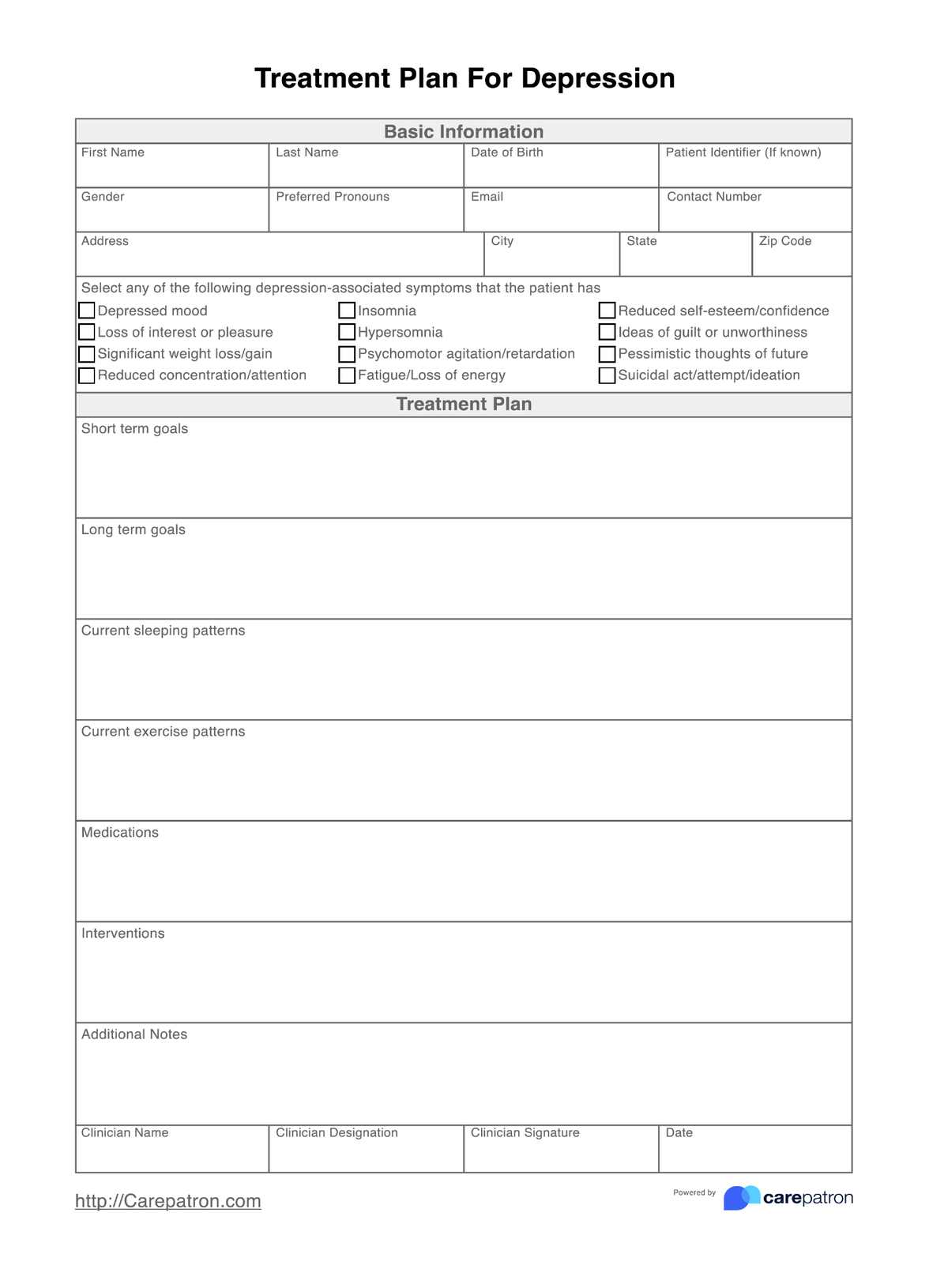
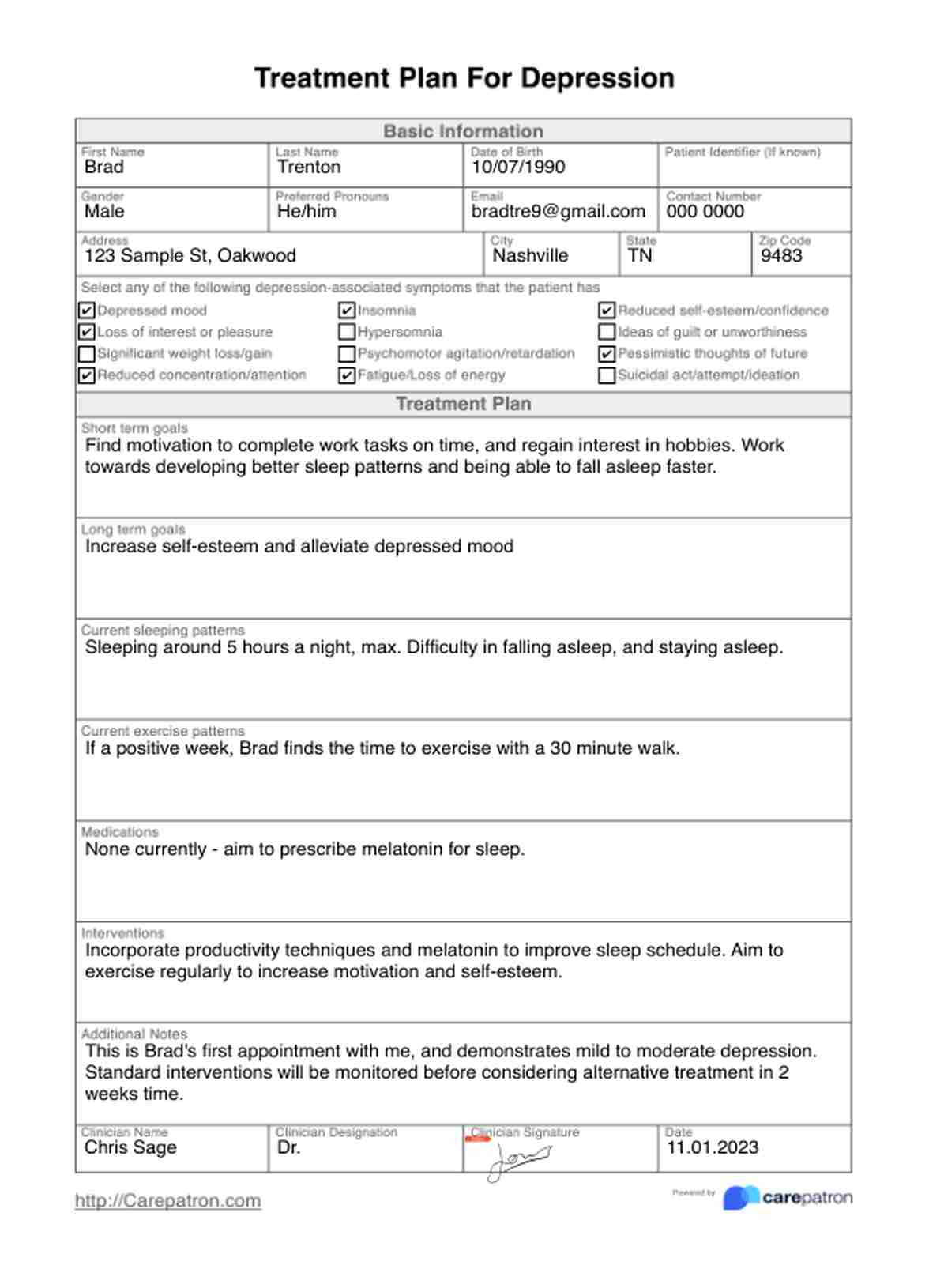

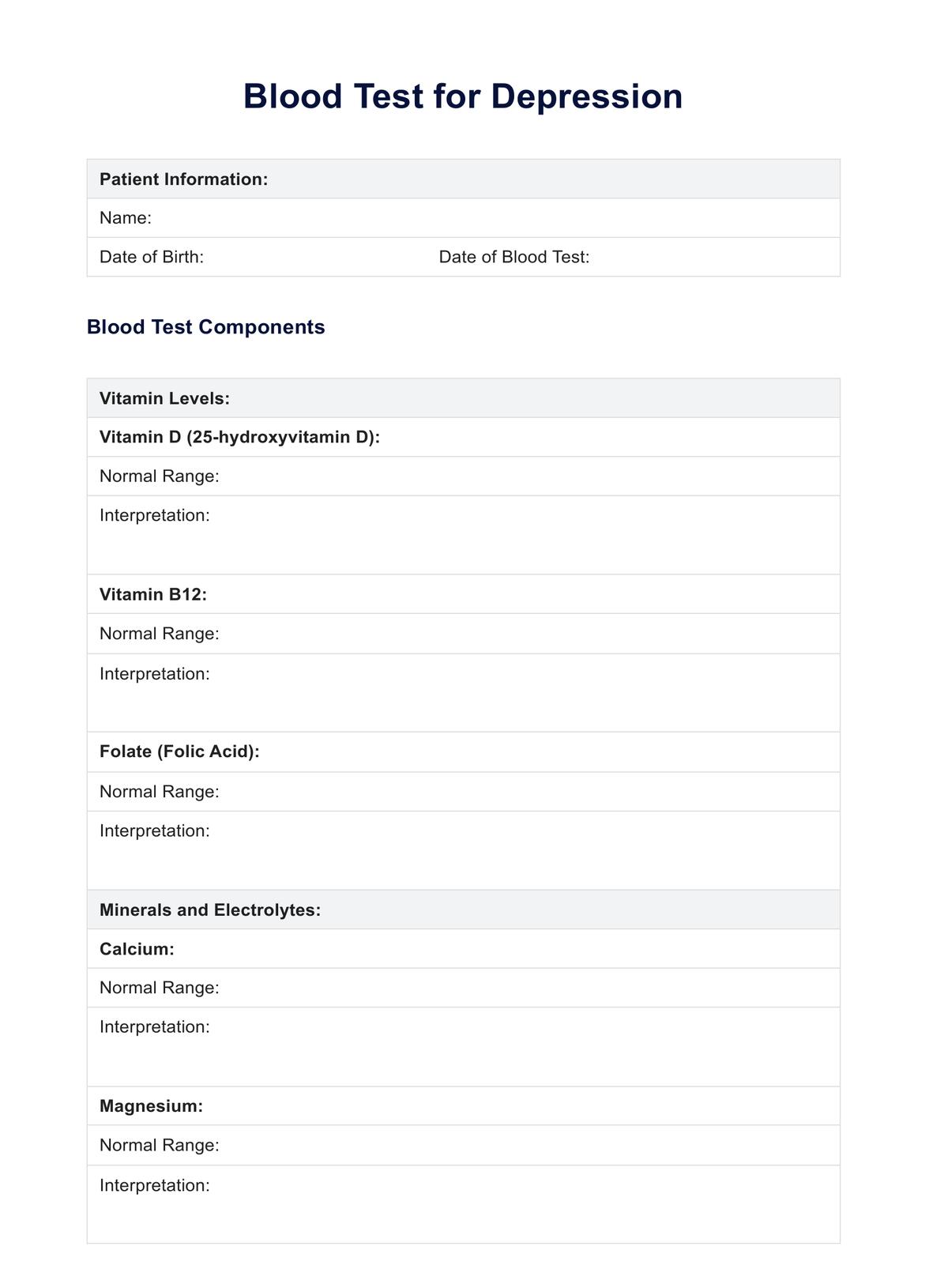












-template.jpg)






























































































